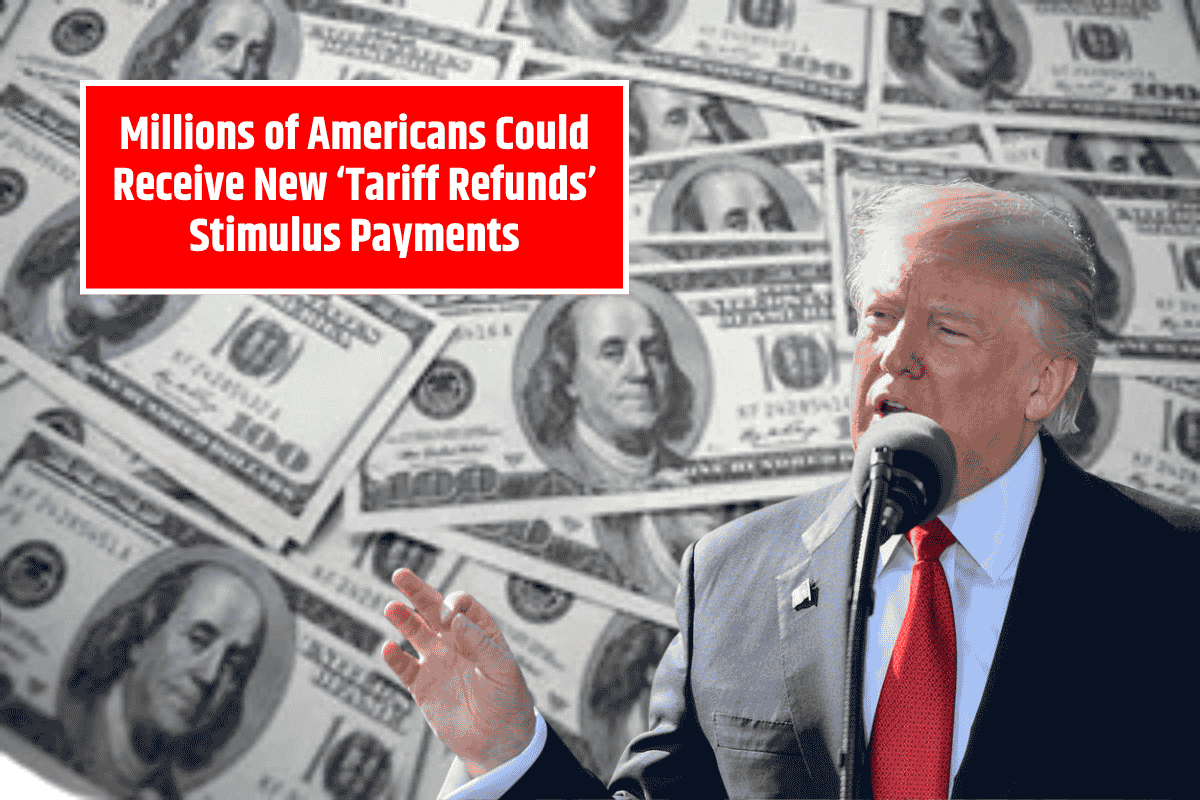U.S. Senator Josh Hawley (R-MO) introduced a new piece of legislation on July 28, 2025, called the American Worker Rebate Act. This proposal aims to provide direct payments to American taxpayers, offering at least $600 per person, including each dependent child.
The structure of this new initiative is similar to the stimulus checks given during the COVID-19 pandemic, but instead of borrowing funds, it would use existing resources from tariff revenues.
The bill’s goal is to help American families with immediate financial relief while addressing the surplus revenue from trade policies put in place during the Trump administration.
How Would the American Worker Rebate Act Work?
The American Worker Rebate Act is designed to provide U.S. taxpayers with a direct payment, with a minimum of $600 per individual, including dependents. For a typical family of four, this would translate into a $2,400 payment.
The initiative uses the revenues generated by tariffs, primarily from the Trump administration’s trade policies, to fund these payments. By mid-2025, tariffs had already generated more than $150 billion in federal revenue, with June alone bringing in nearly $28-30 billion.
Unlike previous stimulus checks funded through borrowing during the COVID-19 pandemic, these payments would be directly financed by tariff revenues.
While many fiscal analysts and lawmakers argue that these surpluses should be used to reduce the national debt, Hawley’s proposal redirects these funds toward immediate financial support for families.
Who Qualifies for the American Worker Rebate?
The eligibility for the American Worker Rebate is based on U.S. citizenship or tax residency. Individuals must claim dependent children or adults on their 2025 tax returns.
People without regular immigration status would be excluded. The proposal sets income thresholds for the rebate, progressively reducing the benefit for higher earners:
$75,000 for singles
$150,000 for married couples filing jointly
$112,500 for heads of household
For those earning above these thresholds, the payment amount would gradually decrease. For every dollar above the limit, the rebate would be reduced by 5%. This ensures that the funds are focused on middle- and low-income households, who are expected to benefit the most.
When Will the Rebate Payments Arrive?
If the bill is passed, the rebate would likely be processed as a refundable tax credit on the 2025 tax return, with potential advance payments later that year.
Mass distribution would likely begin in 2026, administered by the IRS. This would mirror the timing of the COVID-19 stimulus checks, but with a more targeted approach and using existing funds instead of borrowing.
Potential Benefits and Challenges of the Rebate Act
One of the key advantages of the American Worker Rebate Act is that it taps into already available resources. Since the funds are derived from tariff revenues, the government would not need to borrow money, making it a more sustainable option than previous stimulus packages.
It could also provide immediate financial relief to U.S. households, particularly those struggling with inflation and rising costs.
However, critics argue that using tariff revenues for direct payments could add to the federal deficit, especially when there are competing priorities, such as reducing the national debt, which stands at approximately $36-37 trillion.
Additionally, the proposal may face delays in approval due to lack of majority bipartisan support. Despite these challenges, if passed, the rebate could stimulate local economies and provide vital assistance to millions of Americans.
Senator Josh Hawley’s American Worker Rebate Act offers a new approach to financial relief by directly utilizing tariff revenues to fund stimulus payments. If the bill is passed, many American households could receive payments similar to those distributed during the pandemic, but with funds that do not require new borrowing.
While there are potential benefits, including immediate support for families, concerns over the fiscal impact and bipartisan support may affect the bill’s chances of passing. As discussions continue, it remains to be seen how this proposal will evolve and what its ultimate impact will be on U.S. taxpayers.
